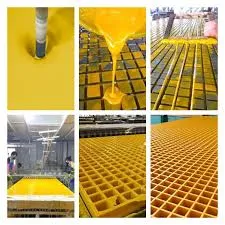
-
 Afrikaans
Afrikaans -
 Albanian
Albanian -
 Amharic
Amharic -
 Arabic
Arabic -
 Armenian
Armenian -
 Azerbaijani
Azerbaijani -
 Basque
Basque -
 Belarusian
Belarusian -
 Bengali
Bengali -
 Bosnian
Bosnian -
 Bulgarian
Bulgarian -
 Catalan
Catalan -
 Cebuano
Cebuano -
 China
China -
 China (Taiwan)
China (Taiwan) -
 Corsican
Corsican -
 Croatian
Croatian -
 Czech
Czech -
 Danish
Danish -
 Dutch
Dutch -
 English
English -
 Esperanto
Esperanto -
 Estonian
Estonian -
 Finnish
Finnish -
 French
French -
 Frisian
Frisian -
 Galician
Galician -
 Georgian
Georgian -
 German
German -
 Greek
Greek -
 Gujarati
Gujarati -
 Haitian Creole
Haitian Creole -
 hausa
hausa -
 hawaiian
hawaiian -
 Hebrew
Hebrew -
 Hindi
Hindi -
 Miao
Miao -
 Hungarian
Hungarian -
 Icelandic
Icelandic -
 igbo
igbo -
 Indonesian
Indonesian -
 irish
irish -
 Italian
Italian -
 Japanese
Japanese -
 Javanese
Javanese -
 Kannada
Kannada -
 kazakh
kazakh -
 Khmer
Khmer -
 Rwandese
Rwandese -
 Korean
Korean -
 Kurdish
Kurdish -
 Kyrgyz
Kyrgyz -
 Lao
Lao -
 Latin
Latin -
 Latvian
Latvian -
 Lithuanian
Lithuanian -
 Luxembourgish
Luxembourgish -
 Macedonian
Macedonian -
 Malgashi
Malgashi -
 Malay
Malay -
 Malayalam
Malayalam -
 Maltese
Maltese -
 Maori
Maori -
 Marathi
Marathi -
 Mongolian
Mongolian -
 Myanmar
Myanmar -
 Nepali
Nepali -
 Norwegian
Norwegian -
 Norwegian
Norwegian -
 Occitan
Occitan -
 Pashto
Pashto -
 Persian
Persian -
 Polish
Polish -
 Portuguese
Portuguese -
 Punjabi
Punjabi -
 Romanian
Romanian -
 Russian
Russian -
 Samoan
Samoan -
 Scottish Gaelic
Scottish Gaelic -
 Serbian
Serbian -
 Sesotho
Sesotho -
 Shona
Shona -
 Sindhi
Sindhi -
 Sinhala
Sinhala -
 Slovak
Slovak -
 Slovenian
Slovenian -
 Somali
Somali -
 Spanish
Spanish -
 Sundanese
Sundanese -
 Swahili
Swahili -
 Swedish
Swedish -
 Tagalog
Tagalog -
 Tajik
Tajik -
 Tamil
Tamil -
 Tatar
Tatar -
 Telugu
Telugu -
 Thai
Thai -
 Turkish
Turkish -
 Turkmen
Turkmen -
 Ukrainian
Ukrainian -
 Urdu
Urdu -
 Uighur
Uighur -
 Uzbek
Uzbek -
 Vietnamese
Vietnamese -
 Welsh
Welsh -
 Bantu
Bantu -
 Yiddish
Yiddish -
 Yoruba
Yoruba -
 Zulu
Zulu
Innovative Solutions for Efficient Water Management Using Fiberglass Launders
The Benefits of Fiberglass Launder Systems in Water Treatment
In the modern landscape of wastewater treatment, efficiency and durability are paramount. One component that has gained significant attention is the fiberglass launder system. These systems, often used in conjunction with sedimentation tanks and clarifiers, provide significant advantages over traditional materials such as metal and concrete. This article explores the benefits, applications, and considerations surrounding fiberglass launder systems.
What is a Fiberglass Launder?
Fiberglass launders are long, trough-like structures made from fiberglass-reinforced plastic (FRP). They are specifically designed to transport liquid, often during the sedimentation process in water and wastewater treatment facilities. The primary function of these launders is to collect and convey wastewater surface flows in an efficient and effective manner, ensuring that the treatment process operates smoothly.
Advantages of Fiberglass Launder Systems
1. Corrosion Resistance One of the standout features of fiberglass launder systems is their exceptional resistance to corrosion. Unlike metal systems, which can deteriorate under harsh chemical conditions, fiberglass maintains its integrity and functionality, even in aggressive environments. This longevity reduces maintenance costs and extends the life of the system.
2. Lightweight and Easy to Install Fiberglass is significantly lighter than traditional materials like concrete or steel. This attribute not only simplifies transportation but also makes installation quicker and less labor-intensive. The ease of installation translates to reduced labor costs and shorter downtime during replacement or upgrades.
3. Smooth Surfaces The smooth interior surfaces of fiberglass launders help reduce the frictional resistance encountered by moving liquids, thereby improving flow rates and reducing the likelihood of clogs. Additionally, the surface properties minimize the buildup of sediment and biofilm, which are common issues in wastewater treatment systems.
fiberglass launder

4. Thermal Stability Fiberglass does not expand or contract significantly with temperature changes compared to metals and concrete. This stability is crucial in maintaining the structural integrity of the launder system and ensuring consistent performance under varying environmental conditions.
5. Customizable Design Fiberglass can be molded into various shapes and sizes, allowing for tailored solutions that meet specific operational requirements. This adaptability can accommodate different treatment processes and site configurations, making fiberglass launders versatile options for any treatment facility.
6. Cost-Effective While the initial investment in fiberglass systems may be higher than traditional materials, the long-term savings due to reduced maintenance, lower replacement costs, and efficient operation often outweigh the upfront expenses. Furthermore, the durability of fiberglass translates to fewer replacements over time.
Applications in Water Treatment
Fiberglass launder systems are widely used in various water treatment processes, including
- Sedimentation Tanks They are essential components in circular and rectangular sedimentation tanks, ensuring that clarified water is efficiently collected and transported. - Dewatering Operations In sludge dewatering, fiberglass launders play a crucial role in managing the flow of dewatered materials. - Cooling Water Systems Fiberglass is ideal for industries dealing with cooling water systems due to its resistance to chemical attacks from various water treatments.
Conclusion
As industries continue to strive for greater efficiency and more effective waste management solutions, fiberglass launder systems emerge as a prudent choice. Their inherent advantages of corrosion resistance, lightweight construction, customizable design, and cost-effectiveness make them indispensable in modern wastewater treatment facilities. By investing in fiberglass systems, operators not only enhance their treatment operations but also contribute to a more sustainable approach to managing water resources. As technology evolves, the adoption and development of fiberglass solutions are likely to keep pace, promising even greater innovations in the water treatment sector.
Latest news
-
Exploring the Benefits of Top Hammer Drifter Rods for Enhanced Drilling PerformanceNewsJun.10,2025
-
High-Precision Fiberglass Winding Machine for GRP/FRP Pipe Production – Reliable & Efficient SolutionsNewsJun.10,2025
-
FRP Pipes & Fittings for Shipbuilding - Corrosion-Resistant & LightweightNewsJun.09,2025
-
Premium FRP Flooring Solutions Durable & Slip-ResistantNewsJun.09,2025
-
Premium Fiberglass Rectangular Tanks Durable & Lightweight SolutionNewsJun.09,2025
-
Tapered Drill String Design Guide Durable Performance & UsesNewsJun.09,2025









